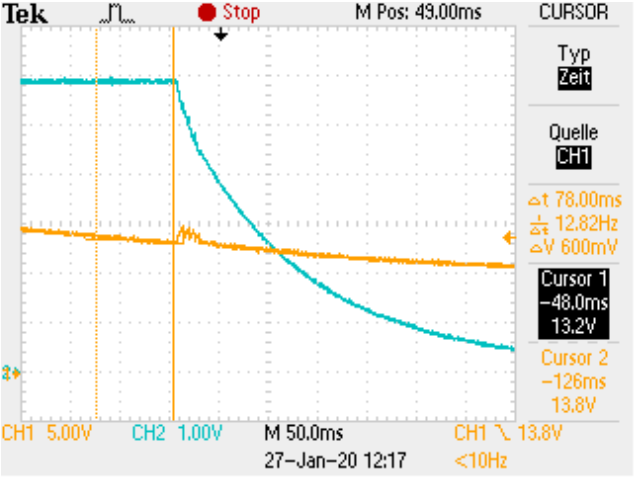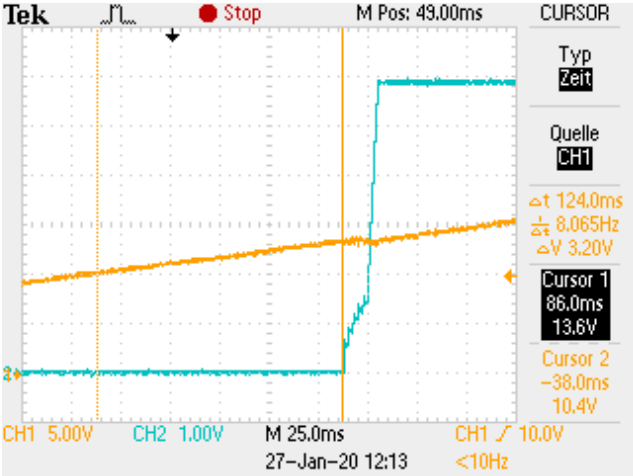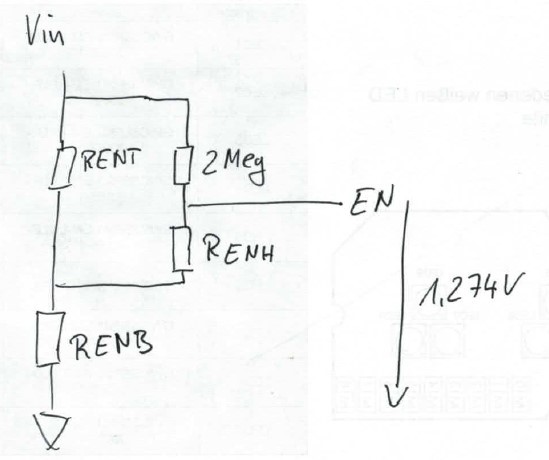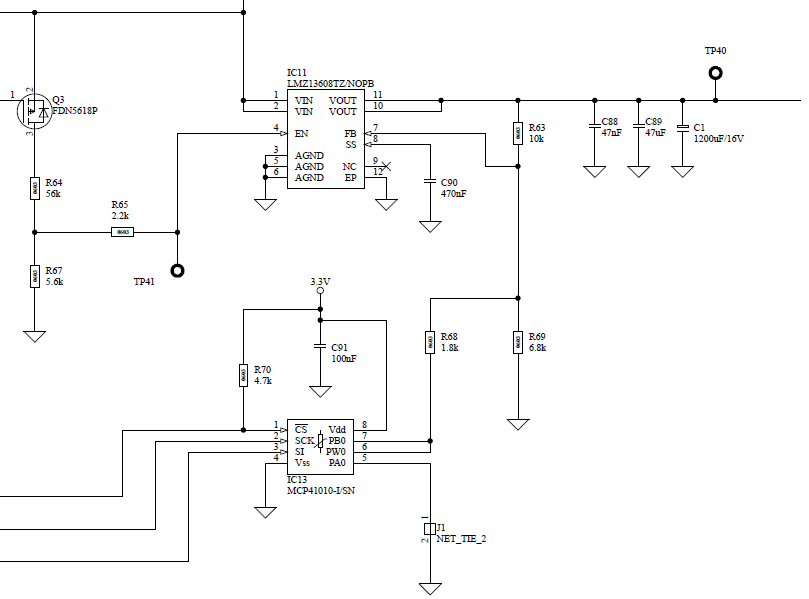I tried to set UVLO and hysteresis based on the figure 48 of the data sheet. I am using 56K for RENT, 5.6k for RENB and 2.2k for RENH.
Measuring the circuit I found that I do not get the expected values for the threshold and hysteresis, and it seems that the EN pin does not source the 13uA when the device is enabled. I found that the pin sinks between 7uA and 15uA depending on the voltage at Vin.
Am I missing something, or is there an issue with the datasheet?





